Getting started with HR analytics: from data to action in 7 steps!

By Kirsten van Enk | 19/07/2021
Do you not only want insight into how your employees are doing? How engaged and happy do they feel at work? Would you prefer that your employees enjoy coming to work every day, are involved and motivated to perform their tasks? But are you still doing the annual employee satisfaction survey? Then it is a good idea to switch to real-time HR analytics. With this, your entire organization continuously provides relevant insights, with which you can keep your finger on the pulse and react proactively and faster. This is a unique and simple way to put ownership and direction within the teams themselves. This means that employees are actively involved in their own happiness or satisfaction at work.
Measuring is knowing! This has been proven, but creating more employee happiness does not stop with measuring. HR analytics provide insight with which you can take data-driven actions. But that may be easier said than done. Practice shows that change does not only come through insight. Getting employees into action is not easy. Realizing positive and sustainable behavioral change is crucial, but at the same time the most difficult thing there is. Careful implementation and assurance determines the success for positive change within the organization. In a change process you go through different phases, each with its own points of attention and development moments.
The Happy High Performance Organization
An integrated approach is important to achieve a real 'Happy High Performance Organization' (HHPO), where employees are vital and enthusiastic about their work. And so you have to use data optimally for various strategic, organizational and team goals. HHPO requires an approach that focuses on a connection between strategy, structure, culture and people in an organization. 2DAYSMOOD and JECKX have developed an innovative 7-phase model that is data-driven and people- and proactively oriented. With an integrated approach, everyone knows why they do the things they do and what they contribute.
The ultimate goal: a continuous feedback model in which action is central. Together you will work within the organization to realize the desired change and opportunities for a positive work climate. Even before the first measurement goes live, you start with the first phase!

Phase 1: Define your scope
In order to have a long-term effect of continuous measurement and HR analytics, good preparation is one of the most important things. Before you start measuring, you must first set your goals. You can do this with a strategic session. During this session, you and the organization look at what impact you want to make and what the measurements should contribute to. In other words, what do you want to achieve? It is important to map out how the research contributes to the organizational objectives, the mission and vision of the organization and the organizational culture. Check what everyone's expectations are. This way you ensure that everyone is on the same page.
In this phase you go deeper into what the measurement should look like, what the results say and how you can get started with HR analytics. When will you discuss the results within the team? How will you feed back the results? When will an action plan be made? And who is responsible for implementation and monitoring progress? By carefully thinking about this in advance, you create realistic expectations and a clear picture for yourself and the rest of the organization. This will help create commitment to the method.
Phase 2: Activate and involve the organization
Now that the strategic goals are clear, it is time to prepare the rest of the organization for measurement. In this phase you not only introduce everyone to the tool, but you also ensure that everyone is aware of the objectives as set by the organization. Good communication is of great importance here. Let employees know what they do it for!
What are your goals? What is done with the results of the measurements? And how will you follow up the investigation? Create ambassadors within the organization for this transition so that they can enthuse their colleagues. In this way it becomes a joint responsibility and it does not remain an “HR thing” where it is only rolled out top-down. Special training is available for this. Make sure you work on the necessary know-how. For example, the ambassadors can bring their internal colleagues with them again, with a nice presentation or, for example, by recording a video. Employee engagement is extremely important as they are the ones who are going to provide input.
“From data, to action, to results” only works if you focus on what you are doing. Our 7-phase model provides various handles from the start of implementation. Not only data, but also guidance during the process. That way you are not alone!
- Martin Meulenkamp, CEO of 2DAYSMOOD
Phase 3: Time to start measuring!
In phase 3 it is time to really start with HR analytics: you will collect data from the organization. It is important to keep the response rate high and to adjust if it is lower. The higher the response rate, the more reliable and valid the survey! Of course you want the results to be as representative as possible.
If the survey is anonymous, emphasize this as well. Employees will then feel more free to give honest answers. You can also emphasize the benefits for organizational culture, productivity, innovation and team success. Indicate why it is important to participate and that the opinion of your employees is important to the organization. After all, it is more difficult to achieve results without their feedback. Serious participation leads to more employee engagement, which positively influences job satisfaction.
In addition to insight into the data, managers or team leaders are trained in conducting the right conversation. How do you discuss emotions in your team? How do you stimulate actions and ownership? But above all very important: how do you make it lively in the team in the long term? In this phase, we work hard on measuring, but also on the basis for working sustainably with the data. It is also important to ensure that everyone remains enthusiastic.
Phase 4: Interpreting the HR analytics
When the results are in, it's time to gain insights from HR analytics. How do you interpret the data? What stands out? What is already going well and where can you improve? And how will you discuss the data further in the organization and have it land?
At the start you made choices in the preparation in terms of importance (e.g. communication, environment, work-life balance, etc.). The results now provide insight into results. The most special and useful is the link to that degree of importance. This way you immediately have a picture of which actions are really necessary and which are less important (despite perhaps a less positive result).
In this phase it is important to define targeted action plans and choose a focus. Try not to do too much at once: often it works better to focus on one area where improvement is needed. So make sure there are priorities. Where can you make the most impact? Do that first.
In addition, be transparent about the results and convert the data into understandable language for everyone. It is important for employees to receive feedback so that they can immediately see what happens with their input.
Phase 5: Implement your initiatives
In the previous phase you thought about what you are going to do and how you are going to do it. Now is the time to implement initiatives. Sometimes opening things up for discussion can lead to a huge improvement. You will therefore have to pay attention to creating a safe environment in which employees can express their true opinion without negative consequences.
In other situations, concrete initiatives may have to be taken. You can also involve employees in this, for example by brainstorming together. Possible coaching and guidance by an expert is also possible within the teams. In any case, ensure that all interests are represented, all knowledge is included and stimulate personal leadership. Involve employees in this process and let them think along about the question: “what do you want to improve and how are you going to do this?”. As a result, creating employee happiness will become a shared responsibility and you proactively build a positive work culture.
Phase 6: Even more measuring and realizing
Now it's time to see if the actions worked. Seeing the effect of your actions and the interventions is not only super important, but also the best thing there is. Because now you know how to move forward and what the next step will be.
Did the chosen actions unfortunately not work out well? What additional information do you need to gain more insight into the situation? The power of continuous measurement is that you get the most realistic possible picture of reality. Emotions and experiences are subject to many different factors and moments. Long-term insight provides a much more realistic picture than a one-off measurement. That's what makes this approach so powerful and effective. With this you really put the employee at the center and you have the space to adjust and take theme-specific actions and to optimize the right knowledge.
It is important that you take an action-oriented approach based on strategic principles. Continuous measurement is therefore important to provide insight into whether the initiatives are working and where you can improve even more!
Phase 7: Consolidation & Assurance - hold on and communicate!
The last phase is all about assurance in the organization. How do you create a data-driven, positive work culture in the long term? It is important to continue to set goals and be action-oriented. Follow-up and transparent communication are key here!
In phase 2 you established what the goals are. Check which expectations you have created and fulfill them. Follow the promised action plans. Put the discussed actions on the agenda during team meetings, report on them in quarterly updates or make them part of assessment and progress discussions. You can also schedule fixed times to provide feedback. And above all: communicate when things are going well!
Any more tips or help with HR analytics?
With these 7 phases you have created a continuous feedback loop with the help of HR analytics. But it is of course possible that you still don't quite know how to follow up on this. Then don't be afraid to ask for help! Our Employee Happiness Experts are at your service and regularly give useful knowledge sessions to help you get started.
Various workshops are part of this integrated approach, but customization is extremely important. There are many more theme-specific workshops available that you can take advantage of. For more information, visit the website of our partner JECKX.
This blog was written by Organizational Psychologist Kim van de Pasch in collaboration with our strategic partner JECKX.
Do you want to get started on increasing happiness at work and actually bring about positive change? This is possible with 2DAYSMOOD's fast, easy and innovative measuring method!


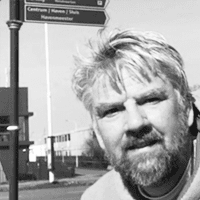


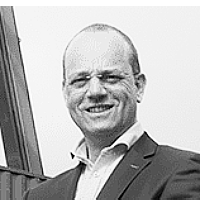
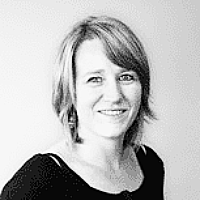



Happy employees make happy customers
These (HR) managers use 2DAYSMOOD and make real impact!
How? Our measuring method is the renewed employee survey, because it’s faster, easier and science based. A continuous source of data with which you can improve your (team) culture step-by-step and increase employee happiness. In short, that is profitable for your organization!

Jan-Herman Hanskamp

Emma Sluman

Rita Blankenberg

Robin Gerritsen
Leading Organizations Work with 2DAYSMOOD


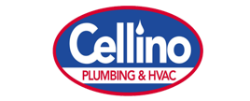
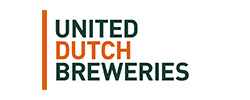


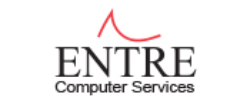
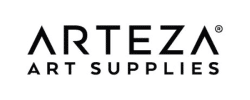

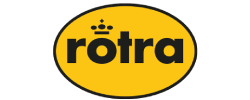
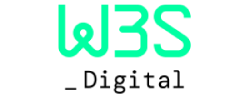
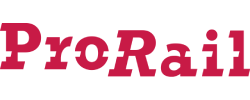

Get in touch for free advice, a demo or quick scan!
Always the employee survey that suits you.
Do you want to increase happiness in your teams? Collect feedback on a specific subject? Monitor stress in real-time? Or do you need a baseline survey to get insight in the drivers of your culture?
We are happy to help with your specific challenge, using:
- Our expertise, experience and energy!
- A demo of our tool (if you like)
- The opportunity to try it for free
- Or enjoy reading our brochure
